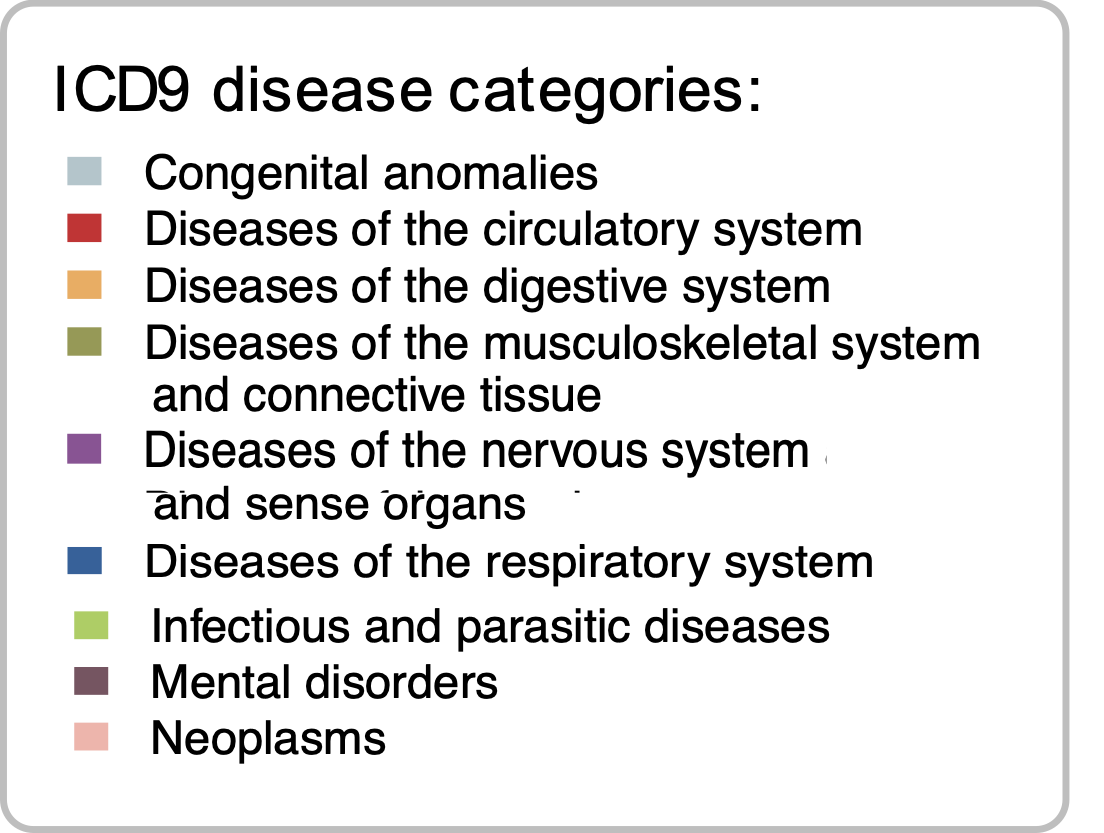Disease Similarity Networks based on gene expression profiles
Red edges denote posite interactions
Blue edges denote negative interactions
Dashed red lines denote positive interactions that correspond to known comorbidities (See Documentation)
Nodes are coloured according to their ICD9 disease category
